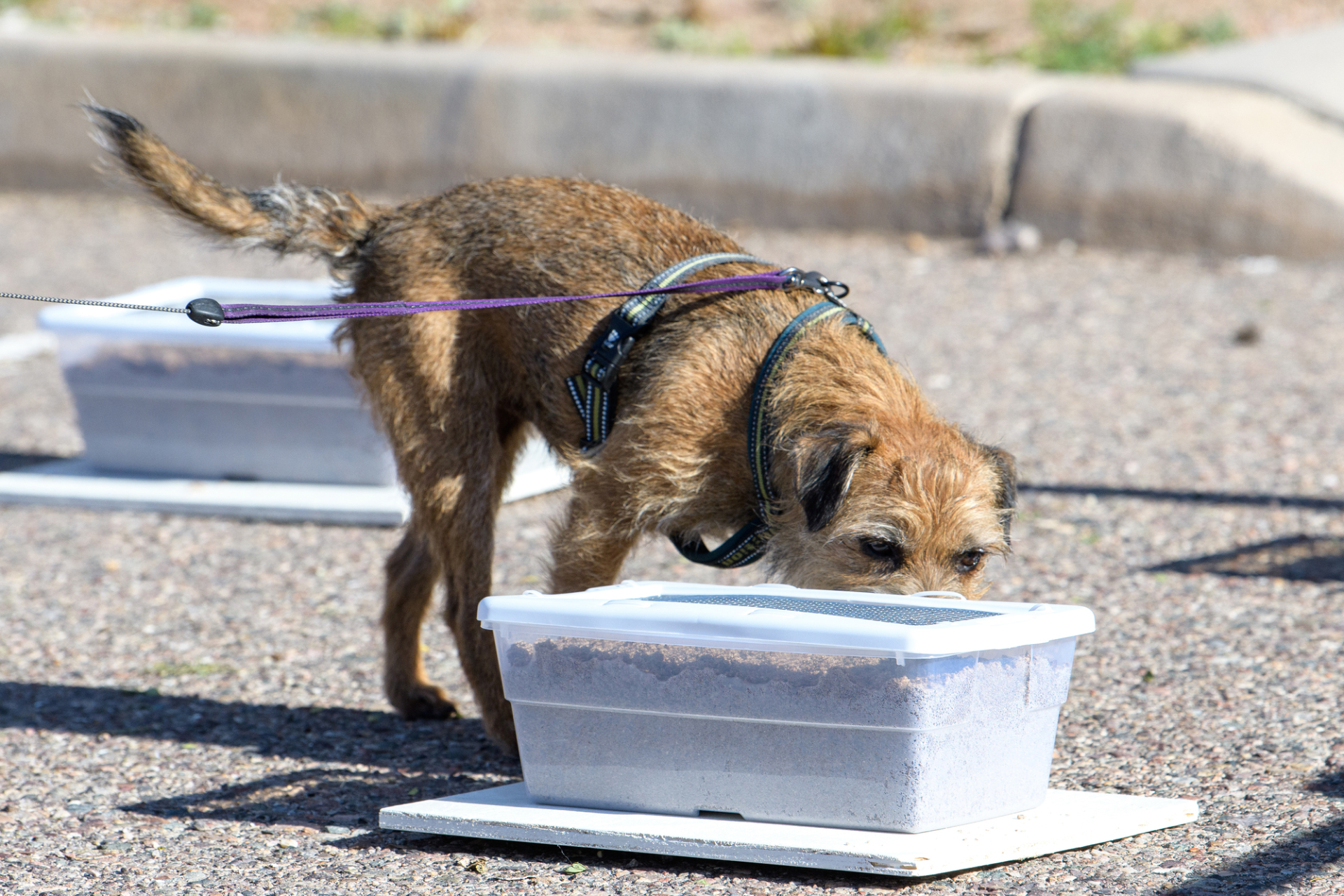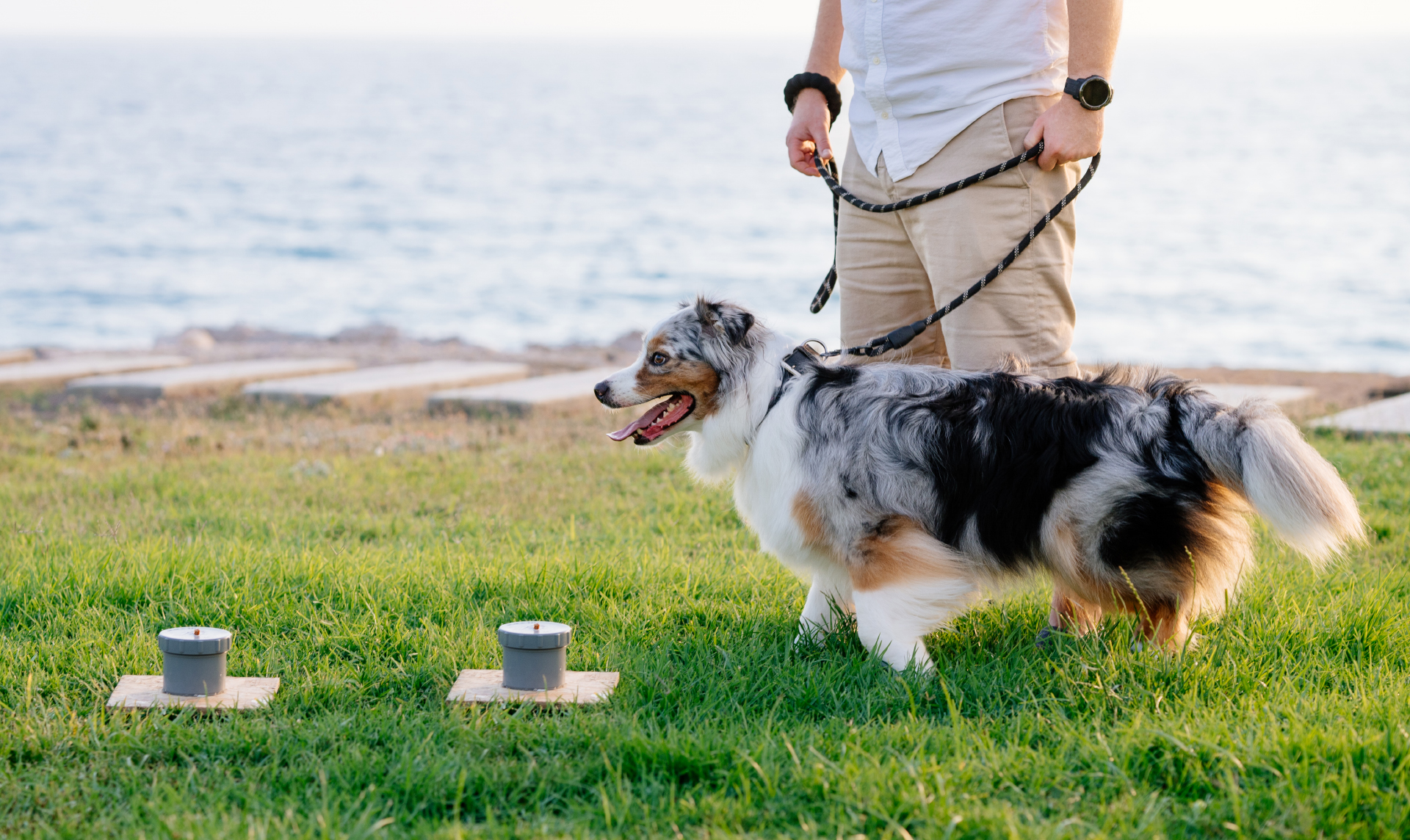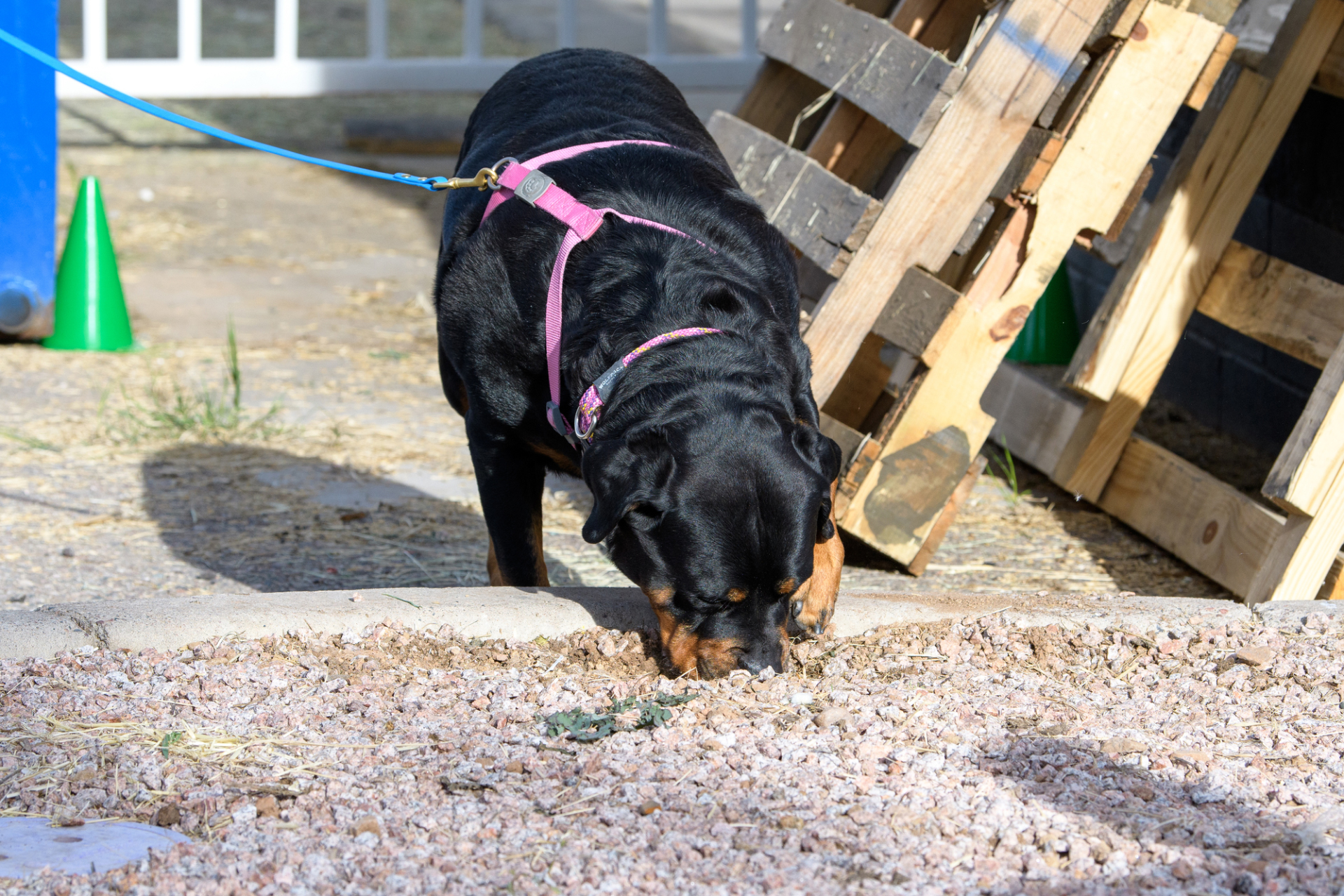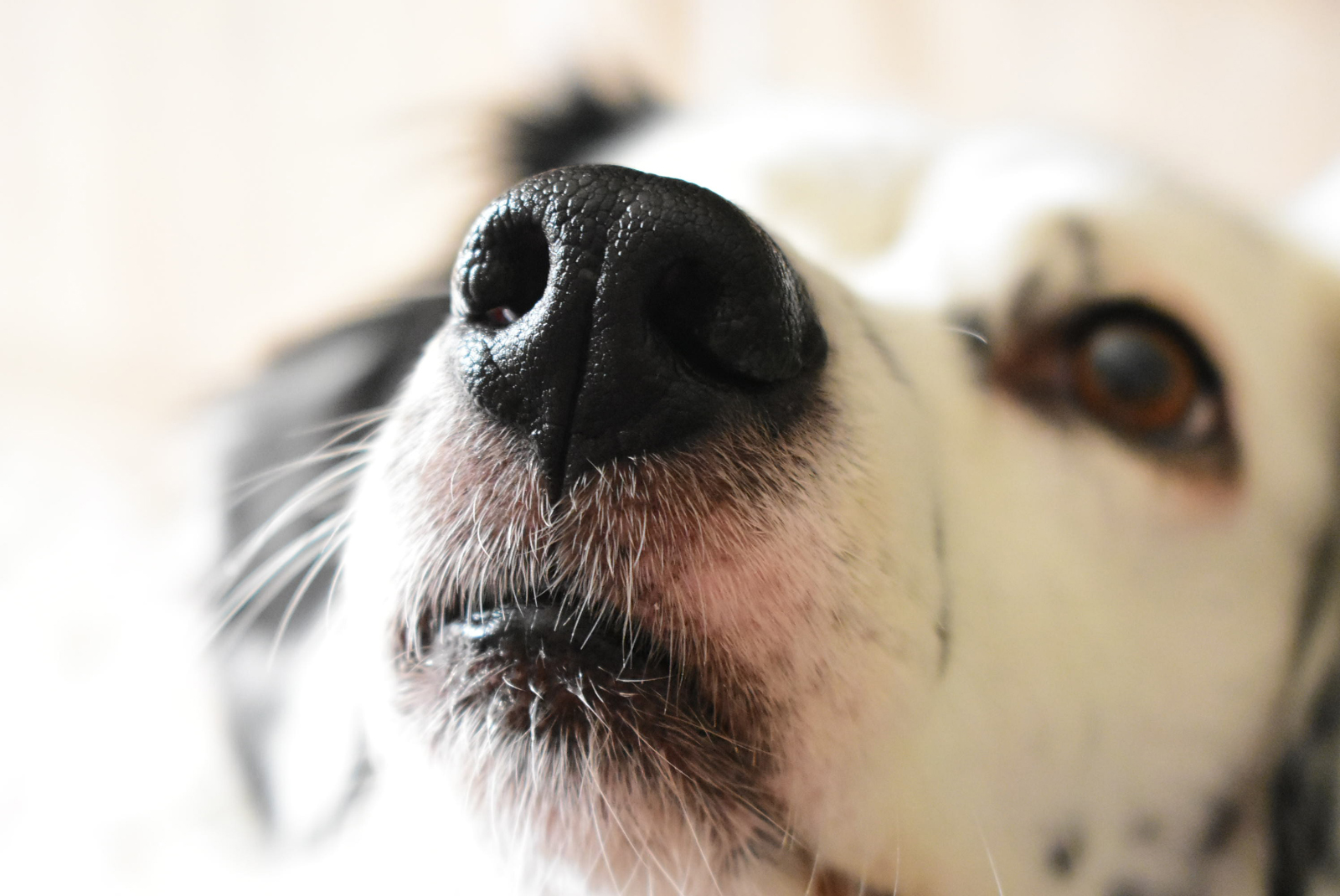Ever wondered how a dog’s nose works compared to ours?
Well, here’s the scoop: humans have about six million smell detectors in their noses in comparison to dogs which have over 300 million!
Not only that, dogs have something extra special called their “second nose,” officially known as the vomeronasal organ, or Jacobson’s organ. It’s located in their nose near the top of their mouth and what’s special about this organ is that it helps dogs detect specific things.
Adult dogs use it to pick up on special chemicals called pheromones, which can tell them about other dogs and possible mates. Puppies use it to find where their mum’s milk is coming from!
Because of this special ability dogs can detect scents and track them, making them ideal candidates for scent work. This type of training involves teaching dogs to use their nose to find specific smells or follow a scent trail.
In a nutshell, a dog’s nose can sense so many smells, and this special “second nose” helps them understand even more about the world around them. Amazingly, they’re also being used experimentally to detect human disease from smell alone and are being used in species conservation. How bonkers is that!?

Get Started with Scent Training
Scent training with your dog is a fun and rewarding experience for you both. In our guide to scent training, we’ll show you the first steps. You’ll learn how to pick the right smells and set up easy training sessions that your dog will love. Whether you’re new to training or a pro, this guide will help you discover your dog’s super-sniffing talents.
Understanding the importance and benefits of scent work
Scent work is not only a mental and physical exercise for your dog- it also taps into their ability to detect scents, so when you engage your dog in scent training, you are providing them with not only mental stimulation, but also satisfying their natural instincts to sniff, leaving them fulfilled and tired.
Preparing your dog for scent training
Before you begin scent training, make sure your dog is ready. Get them used to the training area and show them the things you’ll use, like essential oils or a special toy they love. This will help them feel comfortable and excited to start their adventure!
Choosing the right scent training methods
There are different ways to do scent training, and you can pick the one that suits your dog’s personality or preference best. Some dogs like figuring out different scents, while others enjoy following a scent trail. Think about what your dog likes and what they’re good at when choosing how to do scent training to get the best results.

Teaching your dog scent work
Now that you are familiar with the importance of scent work and have prepared your dog for training, it’s time to start teaching them the basics. Begin with simple training games.
Basic scent training exercises
Start by introducing your dog to a scent and encouraging them to use their nose to locate it. You can use a toy or small containers with holes or a piece of cloth scented with an essential oil. Gradually increase the difficulty by hiding the scent in more challenging places or including distractions.
Tips for successful scent training sessions
Consistency is key when it comes to scent training. Keep your training sessions short and fun, and always end on a positive note and make a huge fuss of your dog. Always use positive reinforcement techniques such as treats, praise, and play to reward your dog for their efforts throughout. Be patient and understanding, as every dog learns at their own pace, and remember to have realistic expectations about your dog and most of all, have fun!
Common challenges and how to overcome them
Scent training can have its challenges, but they can be overcome with the right approach for sure. Some dogs may struggle with distractions or lose focus during training sessions. To address this, gradually increase the level of difficulty as you go along, work on impulse control exercises, and incorporate more stimulating environments. Remember to use those rewards to keep your dog engaged and motivated!
Advanced Scent Work Techniques
Once your dog has mastered the basics of scent work, you can start teaching them specific scent detection skills. This involves training your dog to recognise and indicate the presence of a particular scent. It could be anything from detecting drugs or explosives to finding a missing person or even identifying specific smells like cloves or vanilla.
To teach your dog specific scent detection skills, you can use the scent imprinting method. This involves introducing your dog to the target scent and associating it with a reward. You can start by placing a scented item, such as a cotton swab, a toy or a piece of material soaked in the target scent, in a container along with treats. Gradually, your dog will learn to associate the scent with the reward and will start actively searching for it.
Start by practising in surroundings they know and gradually progress to more challenging locations like parks or crowded areas. This will help your dog develop the skills to focus on the scent even in distracting or unfamiliar environments.
Using scent work for fun and mental stimulation
Remember, scent work isn’t just reserved for professional sniffer dogs or specific detection tasks. It can be used as an activity to provide enrichment and mental stimulation and entertainment for your dog. You can create scent-based treasure hunts or hide-and-seek games. Here are some wag worthy enrichment ideas for you to try!
Scent work is a special way to grow your connection and deepen the bond between you both. It takes teamwork to get it right-an adventure where you and your dog learn to communicate better. When you spend time on scent training, you start to understand each other’s signals and cues in a deeper way, filling your relationship with trust and understanding.

Want to start scent training?
You can join classes or consult with a certified scent detection specialist to find out more. At Yappily, we only feature qualified and ethical Dog Pros in our listings.



Add a comment